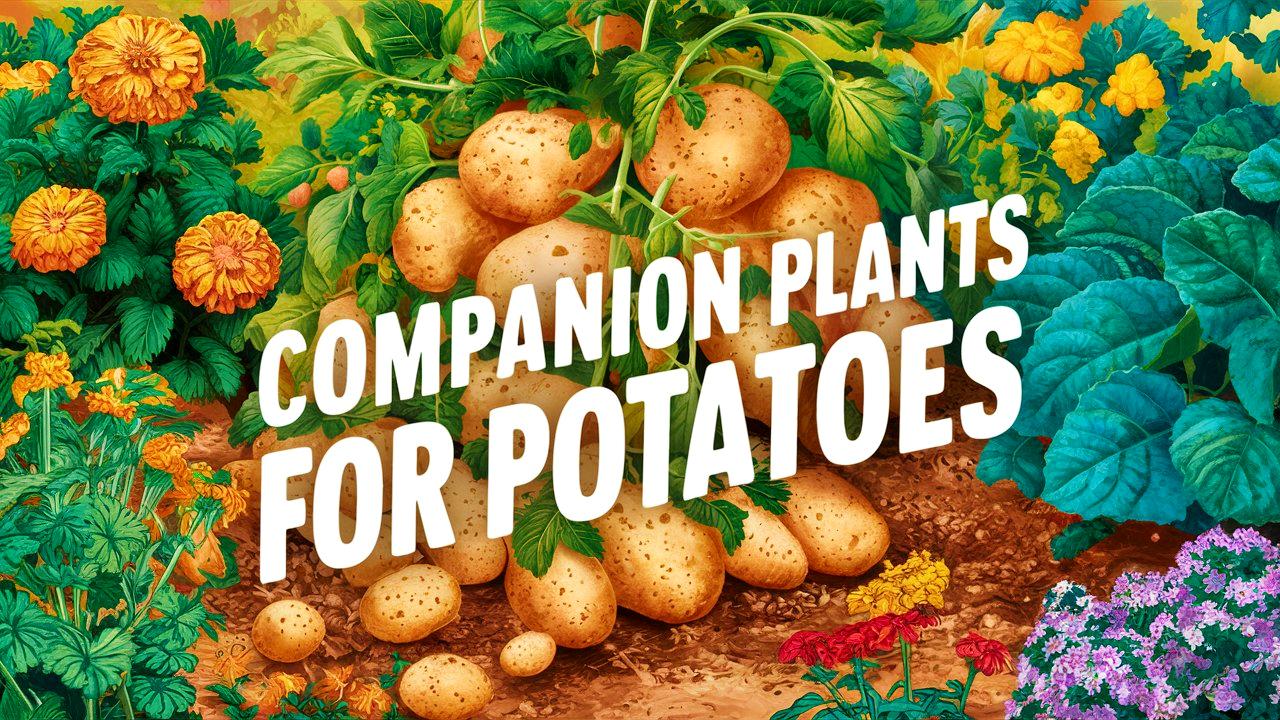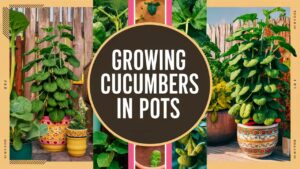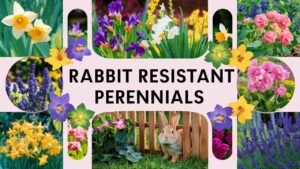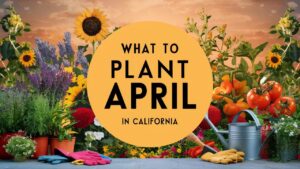Potatoes are a versatile and beloved crop known for their hardiness and adaptability. However, the practice of companion planting can significantly boost their growth potential and overall health. Companion plants can deter pests, improve soil quality, and even enhance the flavor of potatoes.
This detailed guide explores various flower, herb, and vegetable companions for potatoes, along with specific reasons for their suitability and the unique advantages they bring to potato cultivation.
Flower Companions
Flowering plants can provide aesthetic benefits while also functioning as natural pest repellents and nutrient boosters for potatoes.
Yarrow
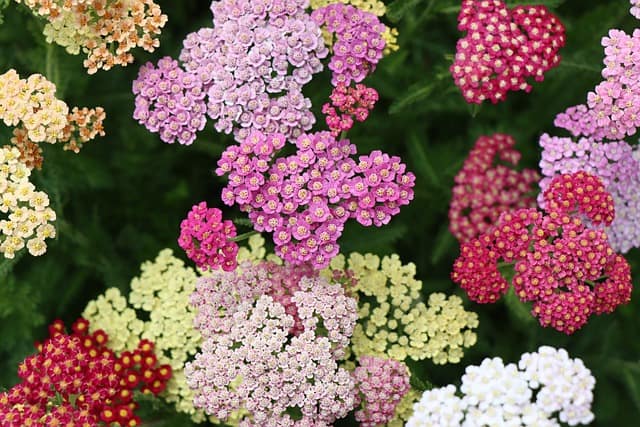
Yarrow (Achillea millefolium) is a hardy perennial that flourishes in various soil types and environments. Its feathery foliage and clusters of small white flowers attract predatory insects, such as ladybugs, which help manage aphid populations that threaten potatoes. In addition to pest control, yarrow contributes to soil health by stimulating microbial activity, improving nutrient breakdown, and facilitating better water absorption. Moreover, yarrow is known for its medicinal properties, traditionally used to treat minor wounds and inflammation.
Marigolds
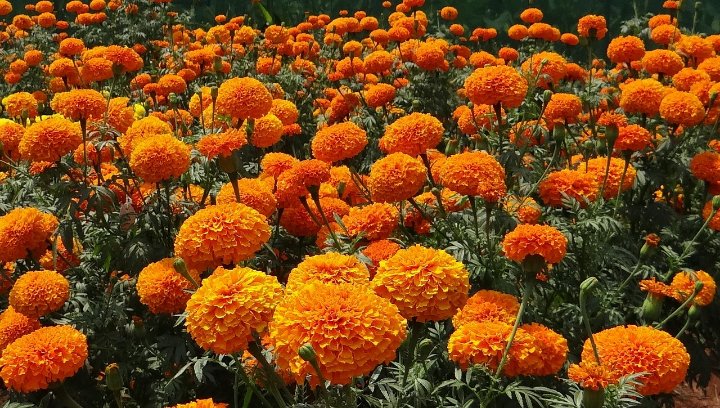
Marigolds (Tagetes spp.) are often touted as the quintessential companion plants for a variety of crops, potatoes included. These annual flowers release a substance called thiophene, known to repel nematodes, aphids, and other garden pests. Marigolds not only provide vibrant color to the garden but also enhance the aesthetic appeal, drawing beneficial insects such as pollinators and predatory species that contribute to pest management. Additionally, planting marigolds nearby can help create a vibrant ecosystem that supports the overarching health of potato plants.
Nasturtiums
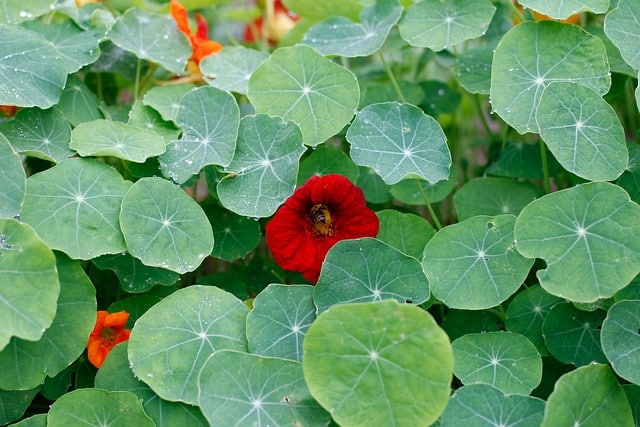
Nasturtiums (Tropaeolum majus) serve a dual purpose in the garden: they are both beautiful and functional. Their bright, edible flowers and peppery leaves not only enhance salads but also act as trap crops for aphids and other pests, diverting them away from potatoes. Nasturtiums grow prolifically and can thrive in poor soil, making them excellent companions that do not compete for nutrients. Their sprawling growth habit can also help suppress weeds around potato plants, ensuring they receive ample resources for growth.
Sweet Alyssum
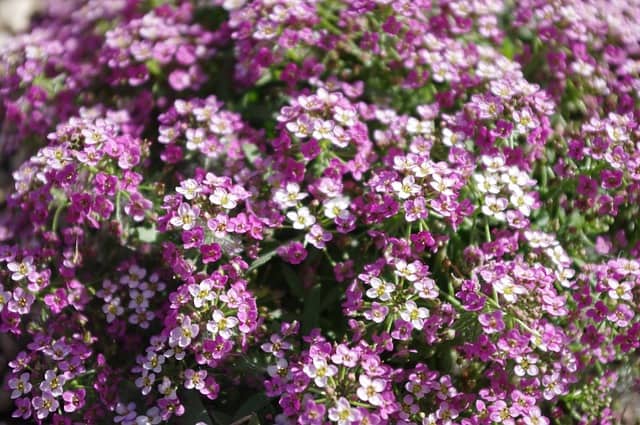
Sweet alyssum (Lobularia maritima) is known for its delicate, sweet-smelling white flowers that carpet garden beds and attract beneficial insects. The tiny blooms are particularly appealing to hoverflies, whose larvae consume aphids, providing natural pest control for potatoes. In addition to attracting pollinators, sweet alyssum offers ground cover that helps retain soil moisture and suppress weeds. This aspect is crucial for potato plants, which thrive in evenly moist soils.
Borage
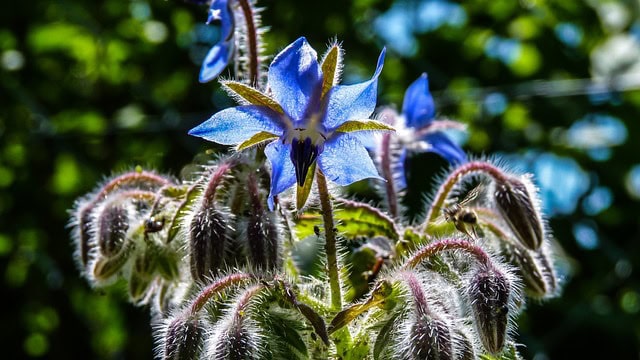
Borage (Borago officinalis) is celebrated for its starry blue flowers and culinary versatility. It’s also a powerhouse in the garden when planted alongside potatoes. Borage can enhance soil fertility by drawing nutrients like potassium and calcium to the soil surface through its deep root system. Furthermore, the presence of borage can improve potato flavor and growth through increased pollinator activity. Borage is often considered a beneficial “nurse” plant, supporting the overall biodiversity of the garden.
Petunias

Petunias (Petunia spp.) are vibrant annual flowers begging for attention with their striking colors and shapes. These flowers are not only visually appealing but also effective at repelling invasive pests such as nematodes and aphids due to their pungent aroma. When planted near potatoes, petunias can also foster an environment that attracts beneficial insects, thereby enhancing pollination and pest control across the garden. Their low maintenance and resilient nature make them a favorite for gardeners looking to partner with potatoes.
Tansy
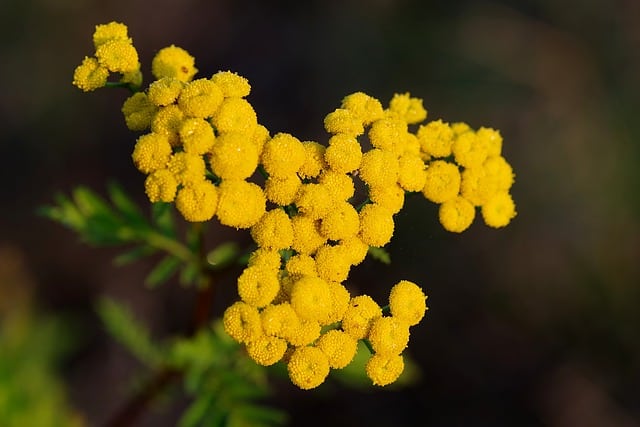
Tansy (Tanacetum vulgare) is a perennial that not only brings a distinct golden appearance to the gardening landscape but also acts as a powerful pest deterrent. For centuries, gardeners have utilized tansy to repel pests such as beetles, moths, and even aphids, contributing to a healthier potato crop. The essential oils found in tansy have insect-repelling properties, and its inclusion in the garden helps establish biodiversity. However, gardeners should keep an eye on tansy, as it can become aggressive and outcompete other plants if not contained properly.
Herb Companions
Herbs can play an integral role in potato gardening, offering pest control, nutrient enrichment, and culinary enjoyment.
Cilantro/Coriander

Cilantro (Coriandrum sativum) is a fast-growing herb that thrives in cooler months. When planted alongside potatoes, cilantro attracts beneficial insects such as parasitic wasps, which prey on aphids and caterpillars that can damage potato plants. It also produces a strong aroma that can mask the scent of potatoes, adding an extra layer of protection against pests. As a culinary herb, both the leaves (cilantro) and seeds (coriander) of this plant can be harvested for various dishes, making it a dual-purpose addition to the garden.
Catmint
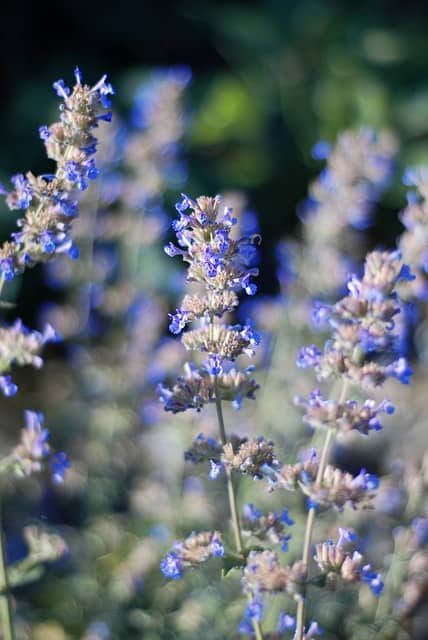
Catmint (Nepeta spp.) delivers delightful blue flowers and a minty aroma that can deter pests like aphids and spider mites. This resilient herb can thrive in drought-like conditions, making it an excellent choice for gardeners who may experience variable watering conditions. Catmint is also a magnet for beneficial pollinators such as bees and butterflies, enhancing biodiversity in the garden. It’s particularly useful as a border plant that attracts good insects while creating a barrier against harmful pests.
Basil
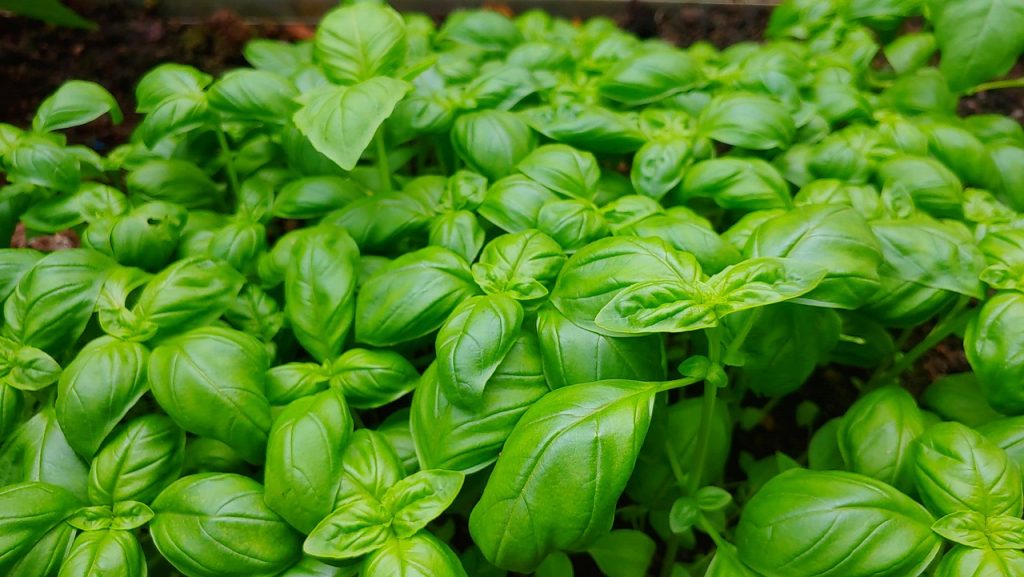
Basil (Ocimum basilicum) is a must-have companion for potato plants. The aromatic herbs repel harmful insects such as mosquitoes and whiteflies, contributing to a healthier growing environment. Additionally, basil improves the flavor of potatoes when grown nearby, enhancing the culinary experience for gardeners looking to maximize taste. Its sprawling growth habit allows it to densely fill space, providing a natural mulch layer that may help retain moisture around potato plants.
Chamomile
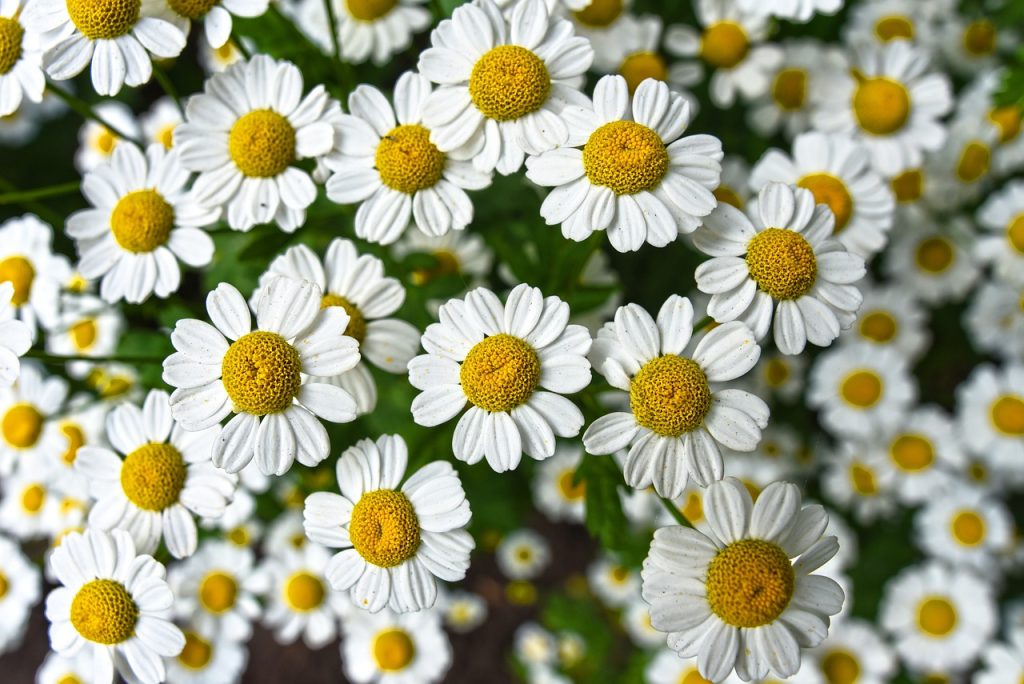
Chamomile (Matricaria chamomilla) is well-regarded for both its delicate flowers and soothing herbal tea properties. In the garden, chamomile attracts beneficial insects, such as hoverflies and parasitic wasps, that prey on pest populations like aphids, contributing to natural pest control. Chamomile is also known to enhance the resilience and flavor of nearby plants, including potatoes. Moreover, its groundcover potential helps suppress weeds, allowing potatoes to access essential nutrients without competition.
Parsley
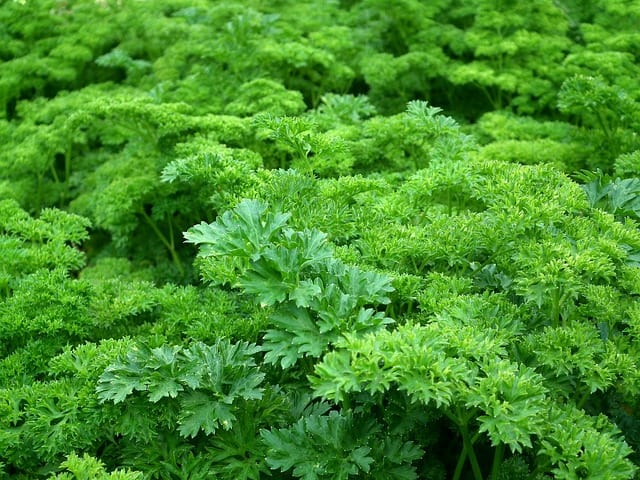
Parsley (Petroselinum crispum) is often used as a garnish but offers substantial benefits when planted alongside potatoes. Its aromatic foliage can repel pests such as aphids, and it attracts beneficial insects, including predatory beetles. As a biennial, parsley is a great option for intercropping with potatoes, providing ground cover in the early stages while allowing the potatoes to grow and develop. Additionally, parsley requires similar growing conditions, making it an easy companion to manage.
Thyme

Thyme (Thymus spp.) thrives in well-drained soil and sunny locations, making it ideal for cooperation with potatoes. Its dense, aromatic foliage can repel harmful insects and attract pollinators, benefiting both crops significantly. Thyme’s resilience allows it to outcompete weeds, while its flowers bloom at different times than potatoes, ensuring continuous support for pollinators throughout the growing season. Furthermore, thyme’s culinary applications provide added incentive for inclusion in the garden.
Lovage
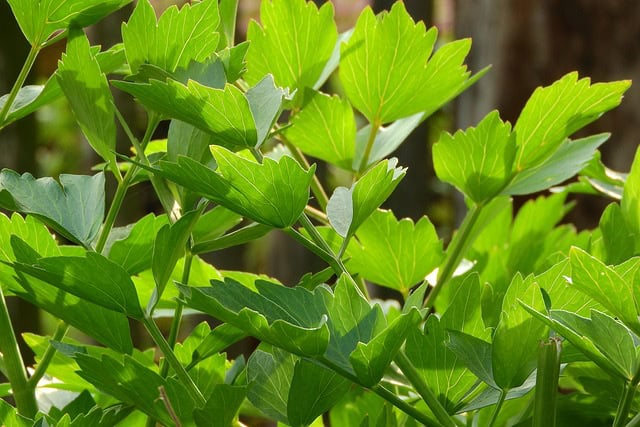
Lovage (Levisticum officinale) is a tall, perennial herb whose leaves and stems resemble celery. This herb naturally attracts beneficial insects, assisting in pest control while contributing to the overall biodiversity of planted areas. Lovage has the capacity to improve soil health by breaking up compacted soil with its deep roots. Furthermore, it brings a distinct flavor to dishes, allowing gardeners to enjoy culinary variety while supporting the potato plants.
Oregano

Oregano (Origanum vulgare) is a robust herb commonly associated with Mediterranean cuisine. Its strong aroma repels several insects, including aphids, spider mites, and carrot flies—pests that can adversely affect potato plants. Oregano’s low-growing habit makes it advantageous for parallel growing alongside potatoes since it won’t overshadow the main crop. The herb’s drought-resistant nature allows it to thrive in varied conditions, ensuring it remains a reliable partner in the garden.
Flax
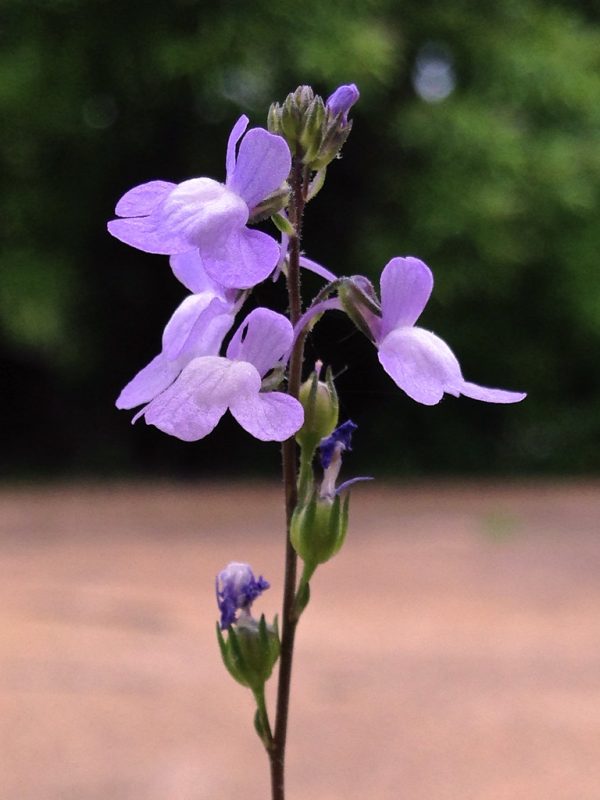
Flax (Linum usitatissimum) is an exceptionally versatile plant recognized for its beautiful blue flowers and edible seeds. This type of plant is a capable nitrogen-fixer, enriching the soil it grows in. Flax attracts beneficial insects while serving as a natural barrier for potato plants against invasions from nematodes. This synergistic relationship allows potatoes to benefit from improved soil health and enhanced pest deterrence. However, gardeners should prepare for flax to grow quite tall, checking that it will not shade the potatoes significantly.
Vetch
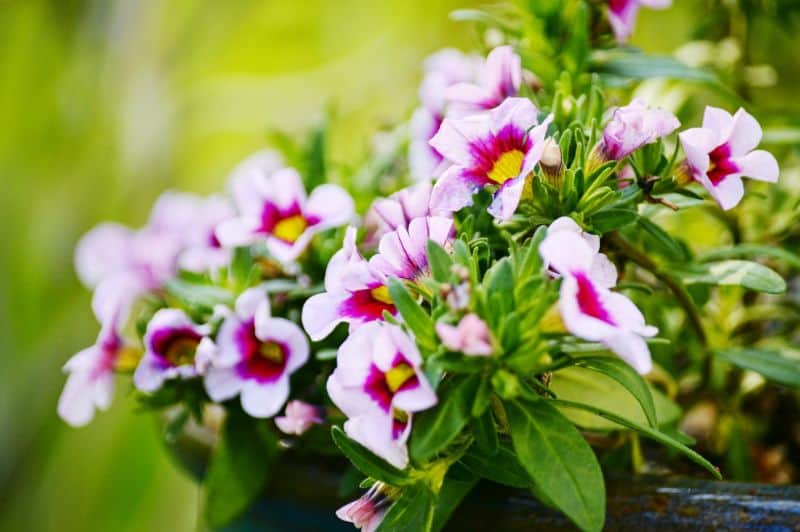
Vetch (Vicia spp.) is a nitrogen-fixing legume revered for its ability to enhance soil fertility significantly and is ideal as a cover crop before planting potatoes. Weakening compaction and improving soil structure, vetch promotes healthy root systems and encourages increased yields. The presence of vetch in the garden also attracts beneficial insects that help protect potato plants from various pests. Furthermore, vetch does not require extensive care after establishment, making it a low-maintenance companion in the garden.
Vegetable Companions for Potatoes
Vegetables can also create beneficial relationships when grown alongside potatoes, enhancing productivity and maintaining a balanced ecosystem.
Corn
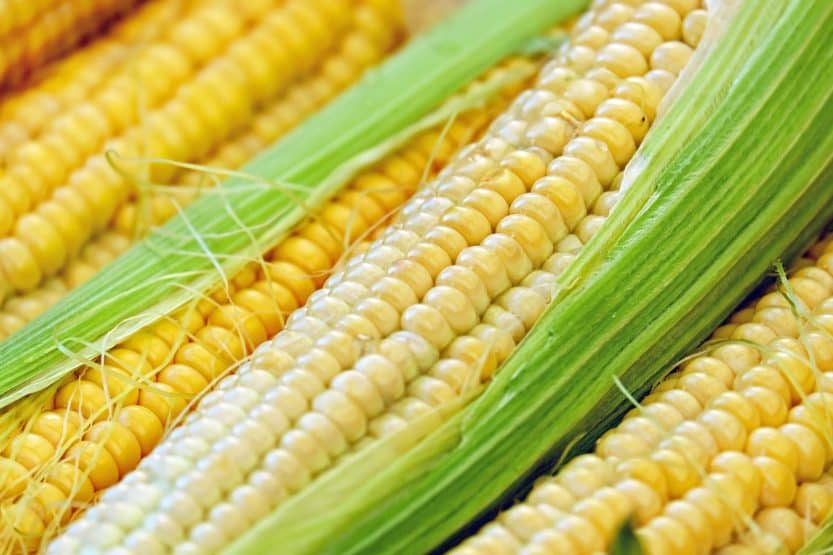
Corn (Zea mays) makes for an excellent companion plant due to its height, offering support for climbing potato vines while providing shade that may help retain soil moisture. Furthermore, corn’s extensive root system can improve soil structure and nutrient availability. By growing corn and potatoes together, gardeners can benefit from complementary resource use, and the two staple crops can thrive harmoniously. Both plants thrive under similar conditions, making them ideal partners.
Beans
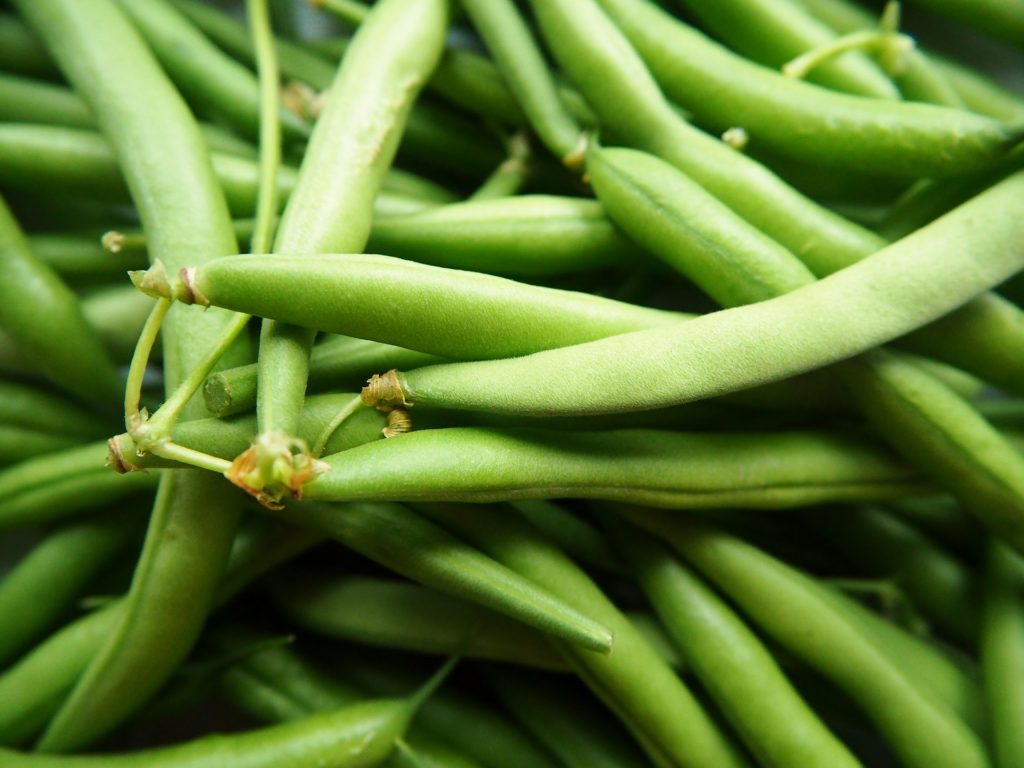
Beans (Phaseolus spp.) are known for their nitrogen-fixing abilities. When grown near potatoes, they can improve soil fertility, providing essential nutrients without effort. This relationship supports a healthier growing environment for potato plants. Additionally, beans’ climbing nature can minimize weed growth, leading to improved soil moisture retention while providing shade to potato plants in warmer months.
Peas
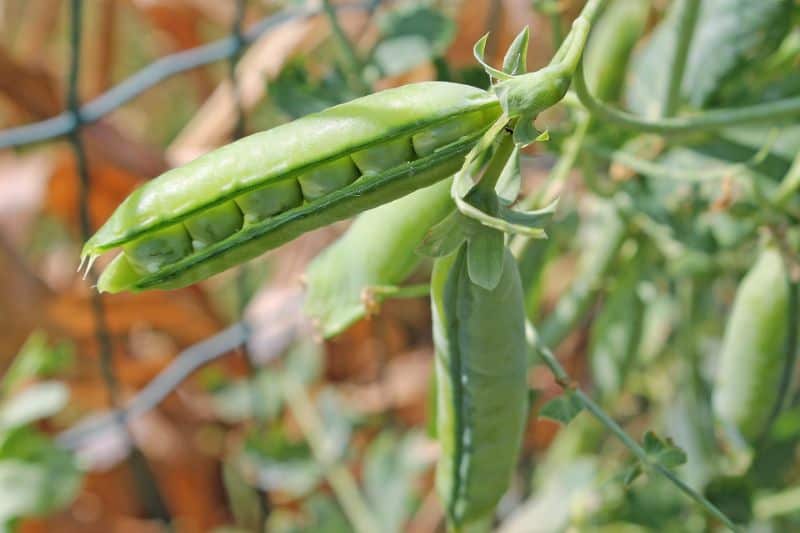
Peas (Pisum sativum) share compatible growing requirements with potatoes, making them another suitable companion plant. Like beans, peas fix nitrogen in the soil, enriching it for optimal potato growth. The vertical growth habit of peas allows for effective use of growing spaces, while their lower leaf structure does not compete for light, ensuring potatoes receive the necessary sunlight. The combination of these two crops can foster a synergistic relationship that maximizes yield.
Leeks
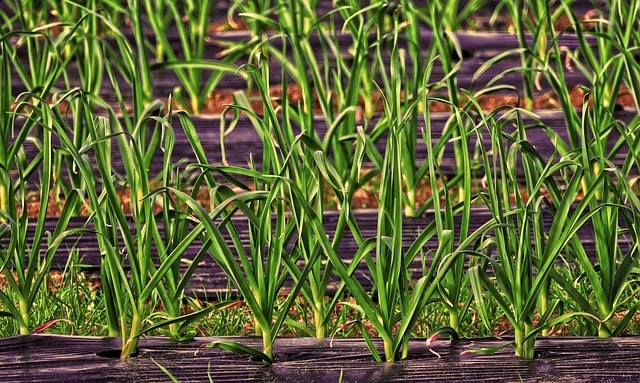
Leeks (Allium ampeloprasum) promote natural pest management when grown alongside potatoes. Their strong scent deters potato pests such as aphids and certain beetles, providing crucial protective measures for potato crops. Additionally, their similar water and nutrient requirements ensure that both plants thrive without competition. The complementary growth patterns of leeks and potatoes make them a winning combination in the garden.
Garlic
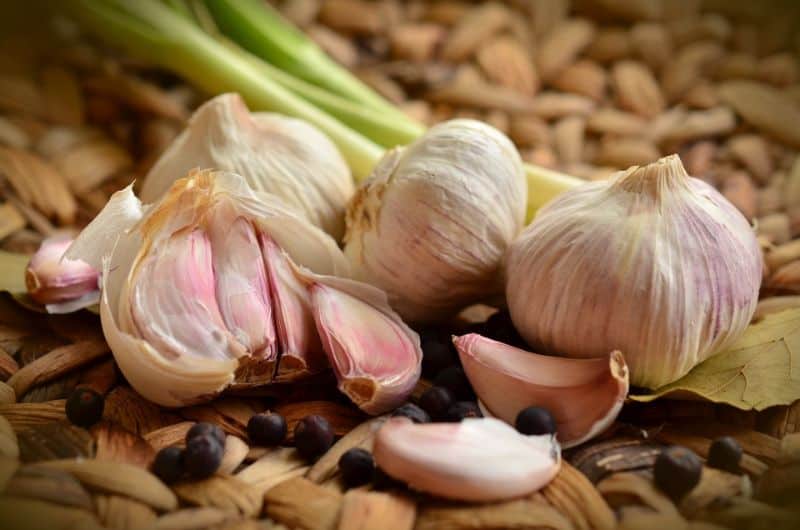
Garlic (Allium sativum) can protect potatoes thanks to its natural insect-repellent properties. The sulfur compounds released by garlic deter nematodes and other pests, contributing to healthier potato plants. Garlic does equally well in similar growing conditions, allowing it to benefit from the same soil and moisture levels. Moreover, the flavors of garlic and potatoes complement each other in culinary applications, creating a harmonious relationship on both gardening and culinary fronts.
Scallions
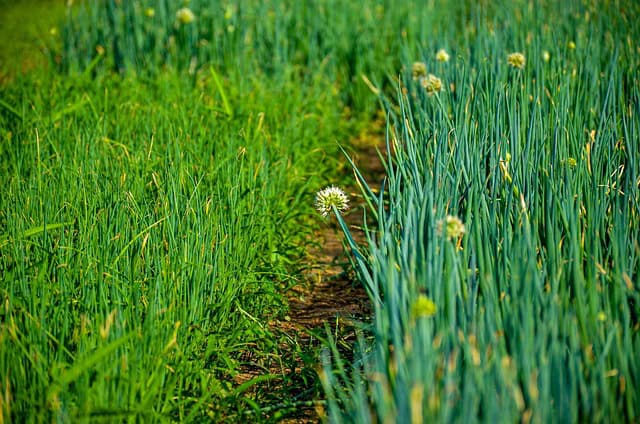
Scallions (Allium fistulosum) are another member of the allium family that acts as a great companion plant for potatoes. Their pest-repelling properties extend to aphids and other harmful insects, contributing to natural pest control. With similar growing conditions required—a preference for full sun and moist soil—scallions and potatoes can effectively share space in the garden without competition for resources.
Onions
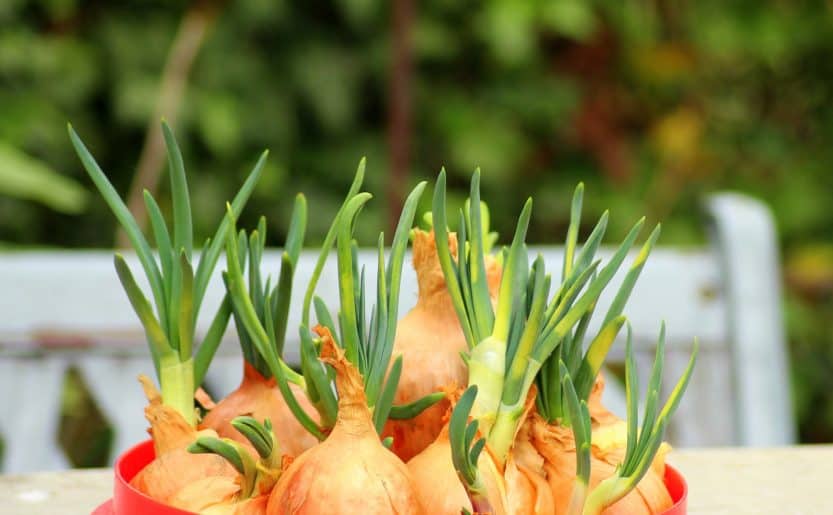
Onions (Allium cepa) are not only beneficial for pest control but also thrive in similar growing conditions as potatoes. The pungent scent of onions helps mask the aroma of the potatoes, providing some protection against pests like aphids and potato beetles. Onions also have a neighboring relationship that helps reduce the incidence of disease while also maximizing space usage in the garden. Together, they can promote greater yield and healthier plants.
Eggplant
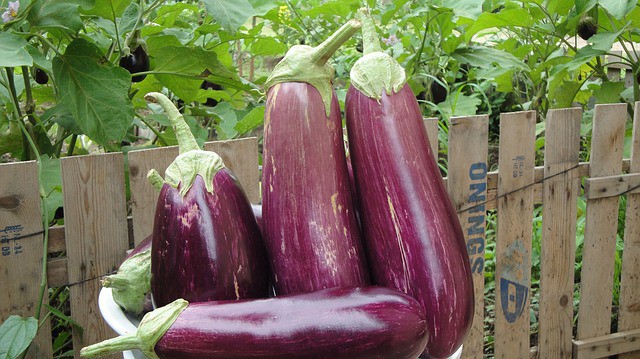
Eggplant (Solanum melongena) shares similar cultural requirements with potatoes, making them suitable companions. Their growth habits are complementary, with both requiring ample sunlight and well-draining soil. The presence of eggplants can add diversity to the garden; both crops can benefit from enhanced pest control through diverse insect patterns, creating a more robust growth environment.
Peppers
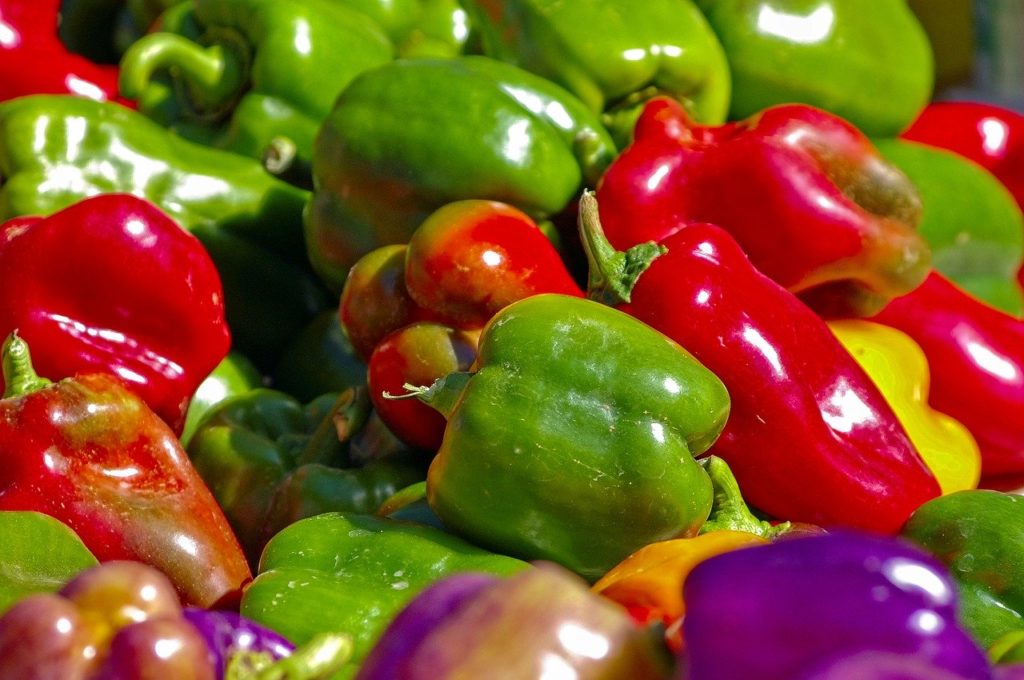
Gardeners often find peppers (Capsicum spp.) as ideal neighbors for potatoes due to their similar needs for sun, water, and nutrients. Pepper plants can deter pests that threaten potatoes, fostering a protective partnership within the garden. The foliage of pepper plants can create a beneficial microclimate for potatoes, allowing for even growth throughout the season. Both crops share the same harvesting period, making it easier to manage and plan your garden harvest.
Lettuce
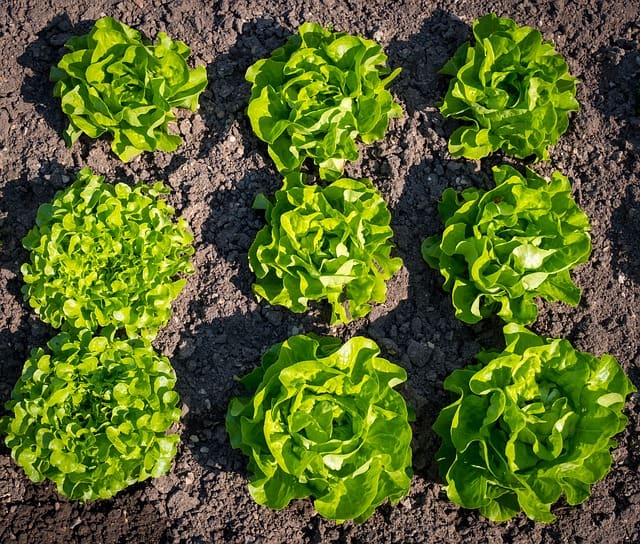
Lettuce (Lactuca sativa) is a fast-growing crop that can be harvested before potatoes fully mature, allowing for efficient space utilization. Lettuce covers the soil, preventing erosion and deterring weeds while providing shade to potato seedlings during early growth. As a companion plant, lettuce can be sown early in the season, giving gardeners a successful crop before the potatoes require the same space later.
Cabbage
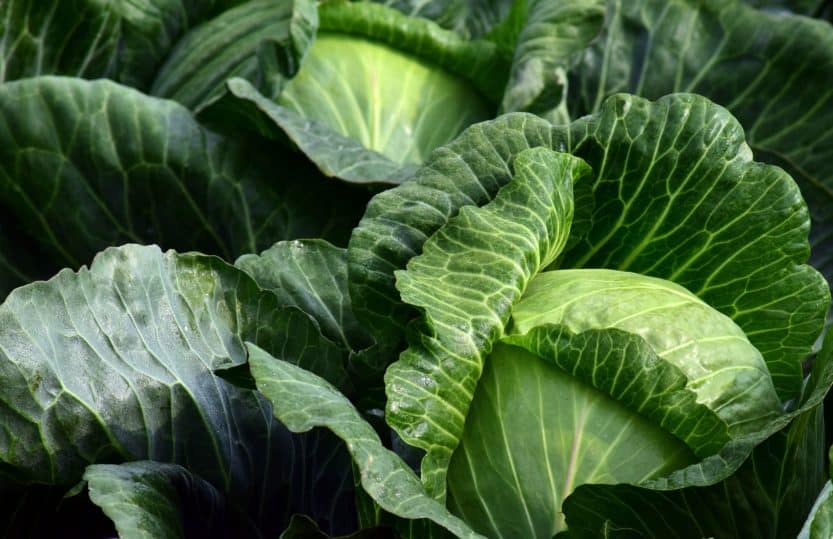
Cabbage (Brassica oleracea) can play a role in protecting potatoes from pests while competing minimally for resources. Cabbage’s broader leaves can offer some shade, helping maintain soil moisture around potato roots. Together, these crops help suppress weeds, ensuring that both types of plants remain healthy and productive during the growing season.
Red Radish
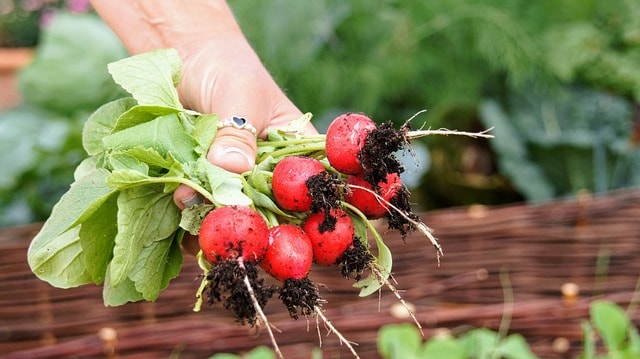
Red radishes (Raphanus sativus) are fast growers that mature quickly, making them an excellent companion for potatoes. They can be harvested well before potatoes are ready, resulting in minimal competition for space. Additionally, radishes can deter pests like the cabbage maggot, providing a layer of protection for nearby potato plants.
Turnips
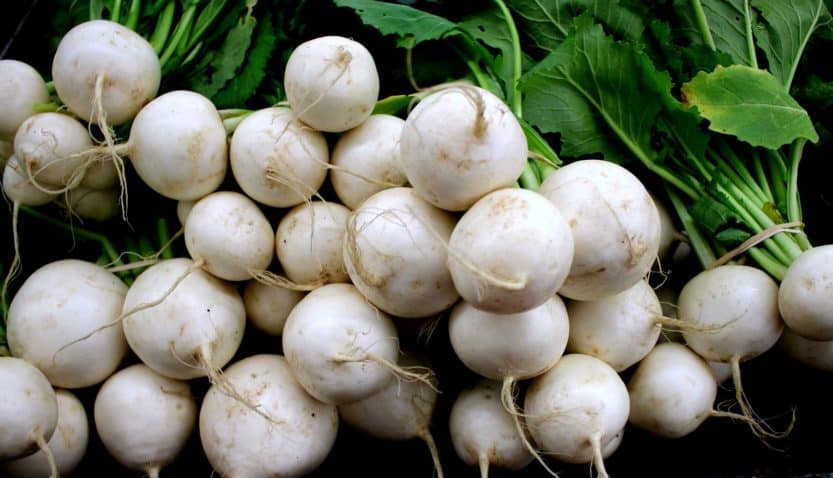
Turnips (Brassica rapa) are another root vegetable that pairs well with potatoes due to their compatible nutrient and water requirements. They grow quickly and can be harvested early, making room for potato plants to mature later in the season. Moreover, turnips help suppress weeds while enriching the soil, both of which support healthy potato growth and yield.
Sweet Potatoes
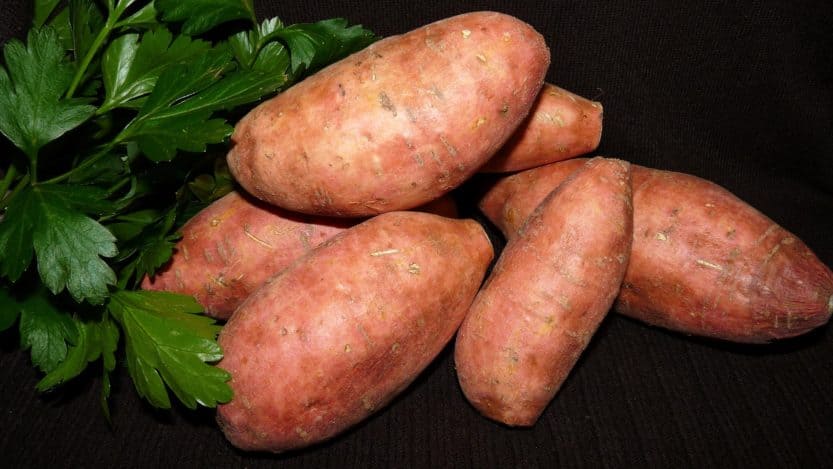
Sweet potatoes (Ipomoea batatas) create an interesting dynamic when planted with standard potatoes. While both need similar cultural conditions, they can coexist successfully without significant competition for resources. The sprawling growth of sweet potato vines can help retain soil moisture, which is beneficial for both crops. However, care must be taken to ensure that both types of plants have ample space to grow without overshadowing one another.
Horseradish
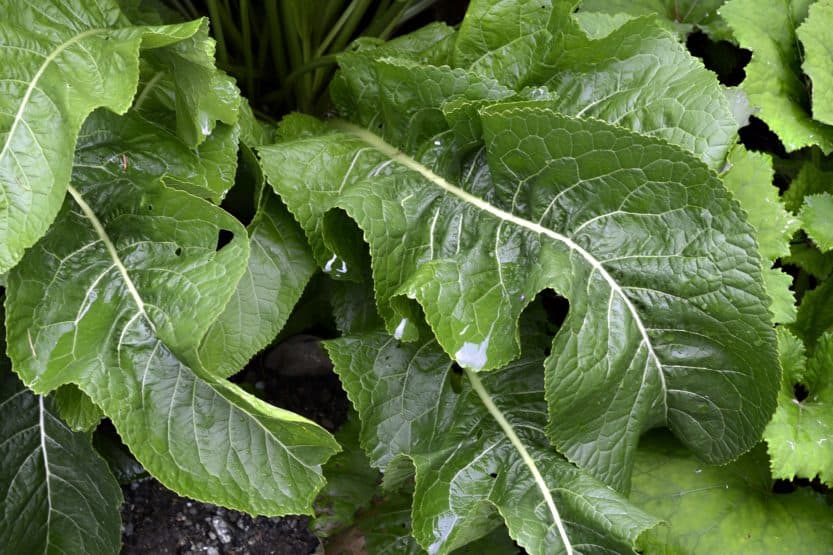
Horseradish (Armoracia rusticana) serves as a protective ally for potato plants due to its ability to deter nematodes and other pests. Being an aggressive grower, horseradish should be carefully contained in the garden to prevent it from overtaking areas where potatoes grow. Its strong flavor can enhance dishes that include potatoes, providing culinary value alongside agricultural benefits.
Avoid Planting These With Potatoes
While many plants offer great benefits alongside potatoes, certain crops can negatively impact their growth, leading to issues related to competition, pest attraction, and disease susceptibility. Being aware of these less-than-ideal planting combinations is critical for gardeners pursuing a successful potato harvest.
Asparagus
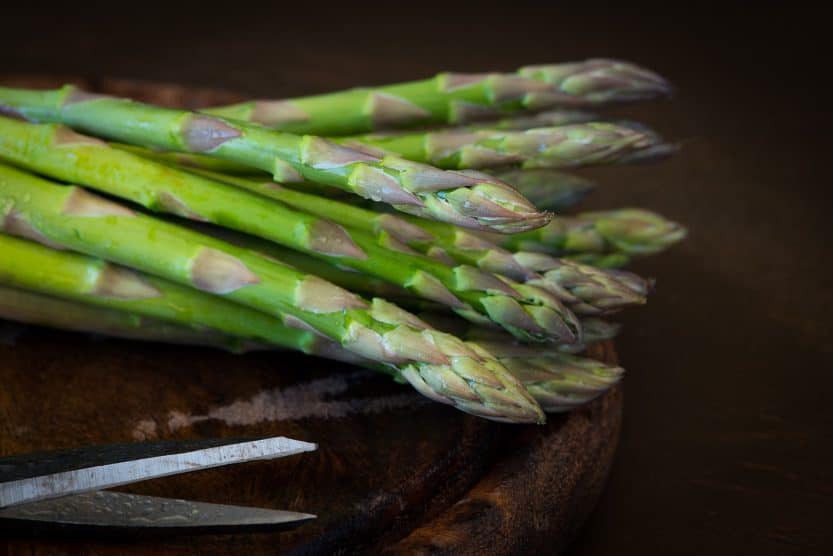
Asparagus (Asparagus officinalis) establishes deep roots and prefers well-drained conditions, which can conflict with the potato’s need for slightly moister soil. Additionally, as asparagus emits growth inhibitors that may stunt nearby plant growth, growing them together is not advisable.
Squash
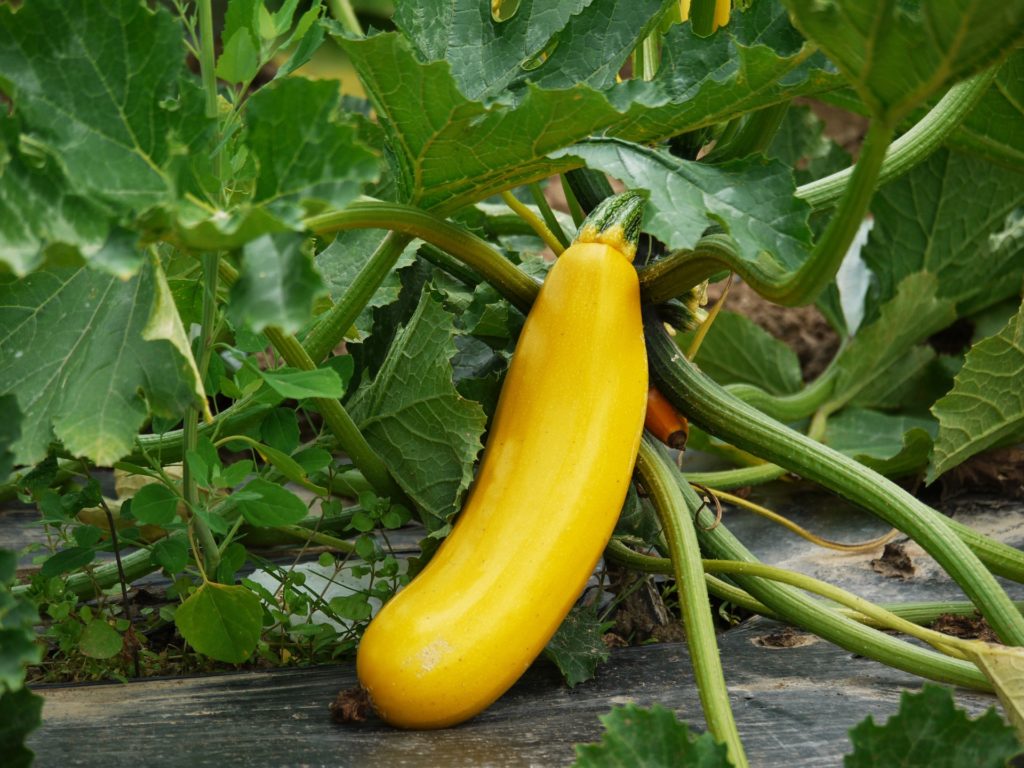
Squash (Cucurbita spp.), while often interplanted with other crops, can attract numerous pests that also threaten potatoes, such as squash bugs and aphids. The sprawling nature of squash can overshadow potatoes, thereby stunting their growth and making them more susceptible to weed competition.
Fennel
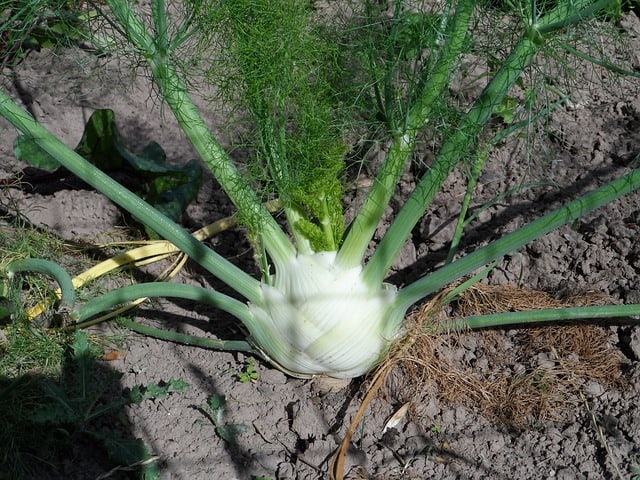
Fennel (Foeniculum vulgare) has allelopathic properties, meaning it inhibits the growth of nearby plants, which can adversely affect potatoes. Its strong aroma may disrupt the delicate balance of pests and beneficial insects in the garden, resulting in heightened pressures on potato plants.
Sunflowers
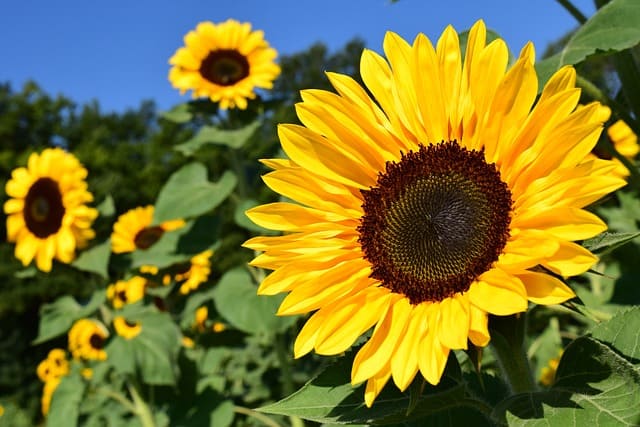
Despite their beauty, sunflowers (Helianthus annuus) can overshadow and compete with potato plants for sunlight. Additionally, they can attract pests that may also target potatoes, including aphids and various beetles. Given these detrimental aspects, it is best for gardeners to avoid planting sunflowers in close proximity to potato crops.
Tomatoes
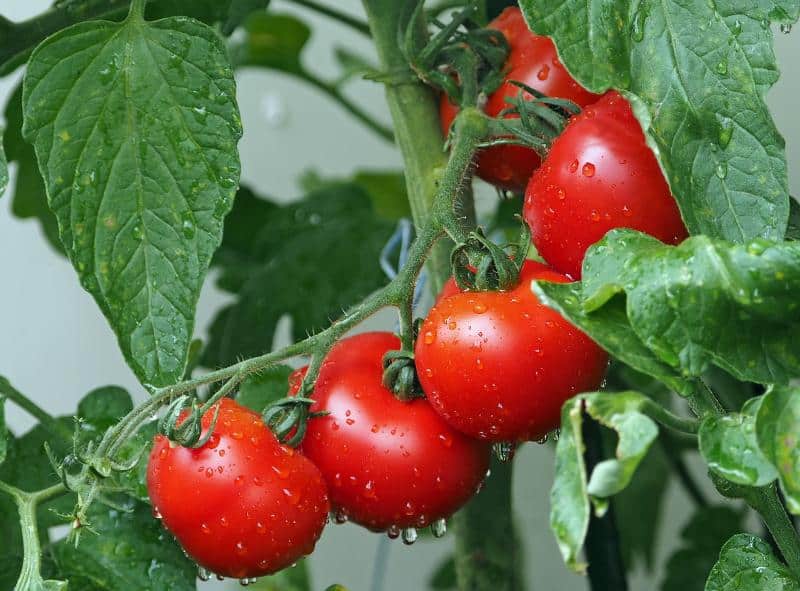
As members of the same botanical family (Solanaceae), tomatoes (Solanum lycopersicum) and potatoes are susceptible to several of the same diseases and pests, particularly blight and aphids. Compounding the problem is the increased risk of disease transmission because of their phylogenetic closeness. Planting them together can lead to a higher chance of infestations and crop failure.
Cucumbers
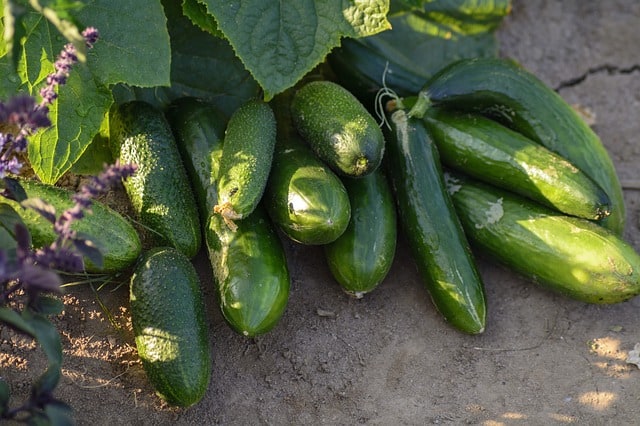
Cucumbers (Cucumis sativus) require ample moisture and compete with potatoes for nutrients and water. Their sprawling nature can overshadow potato plants, potentially stunting their growth. Additionally, cucumbers attract vine borers and other pests that may also infest potatoes, increasing the risk of damage.


